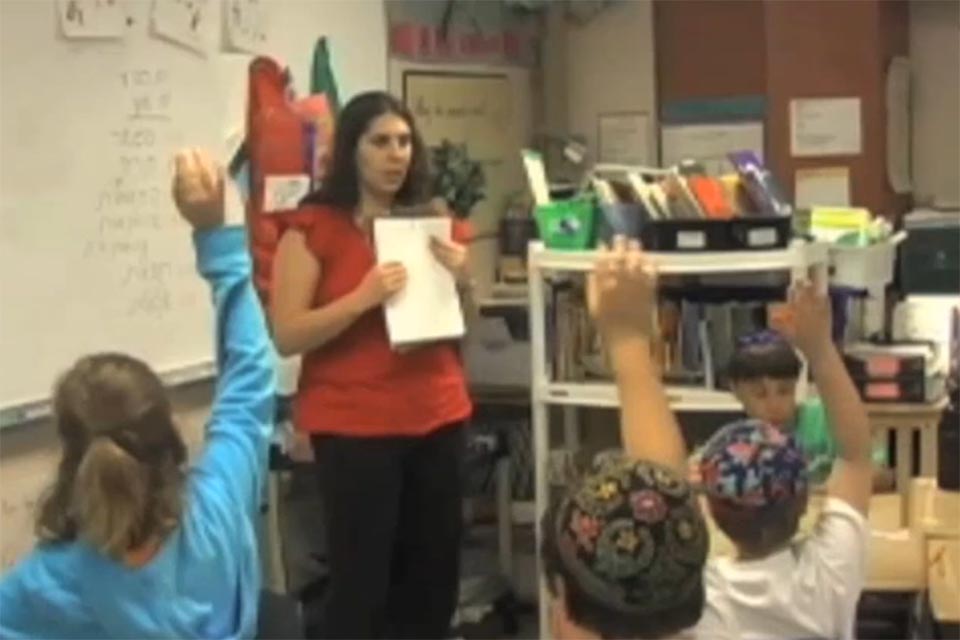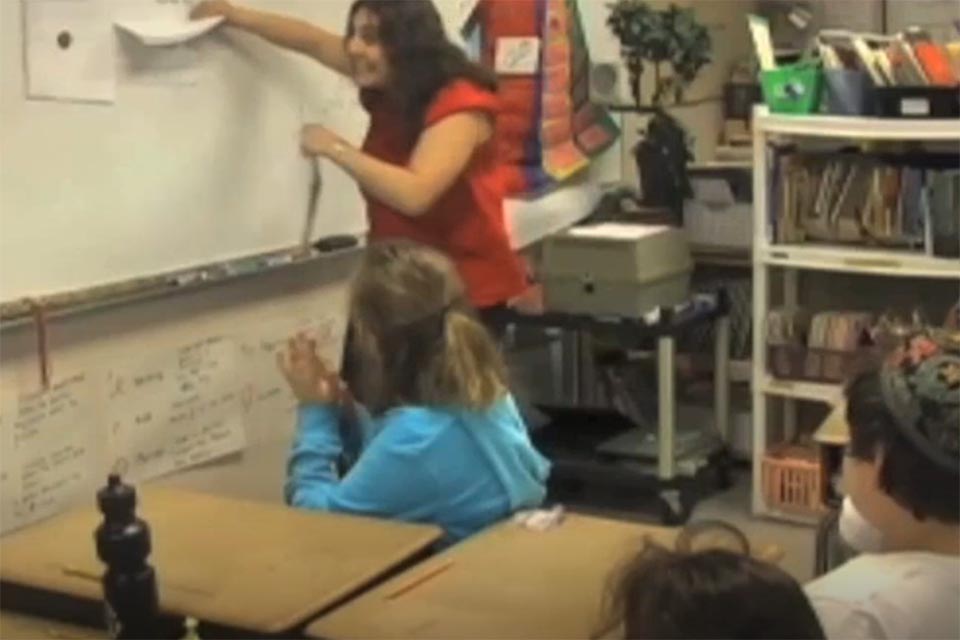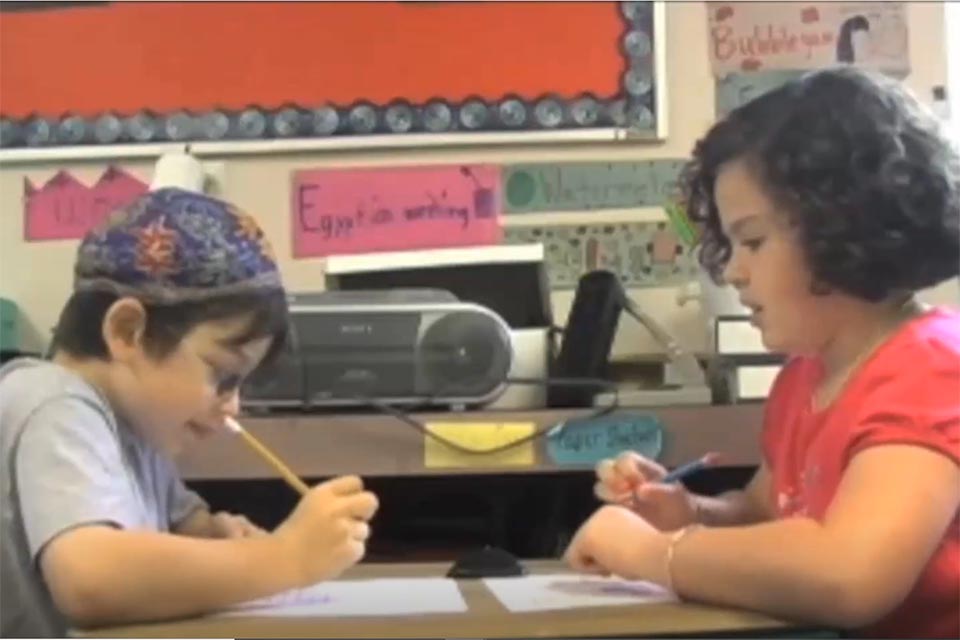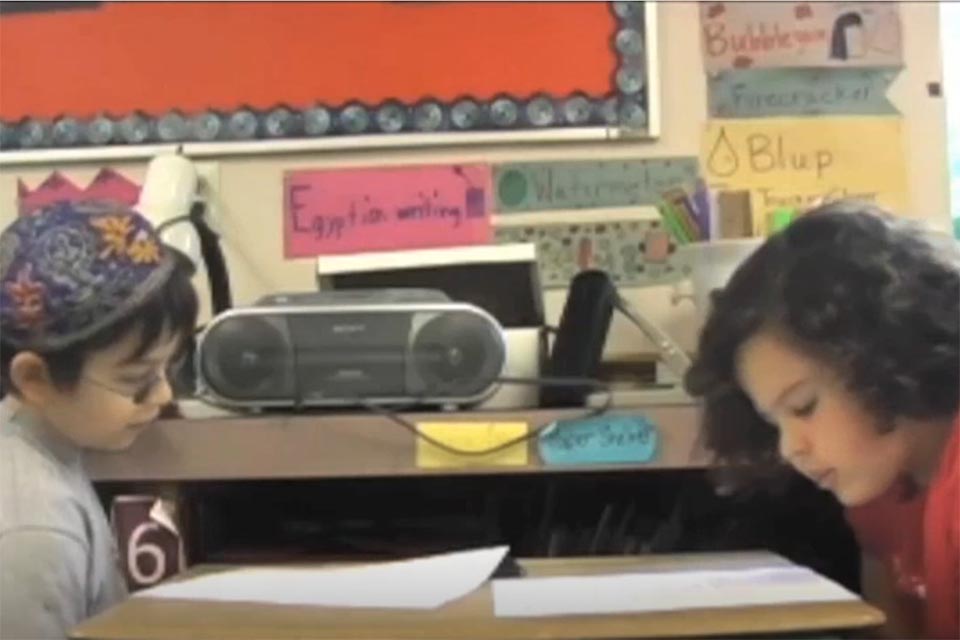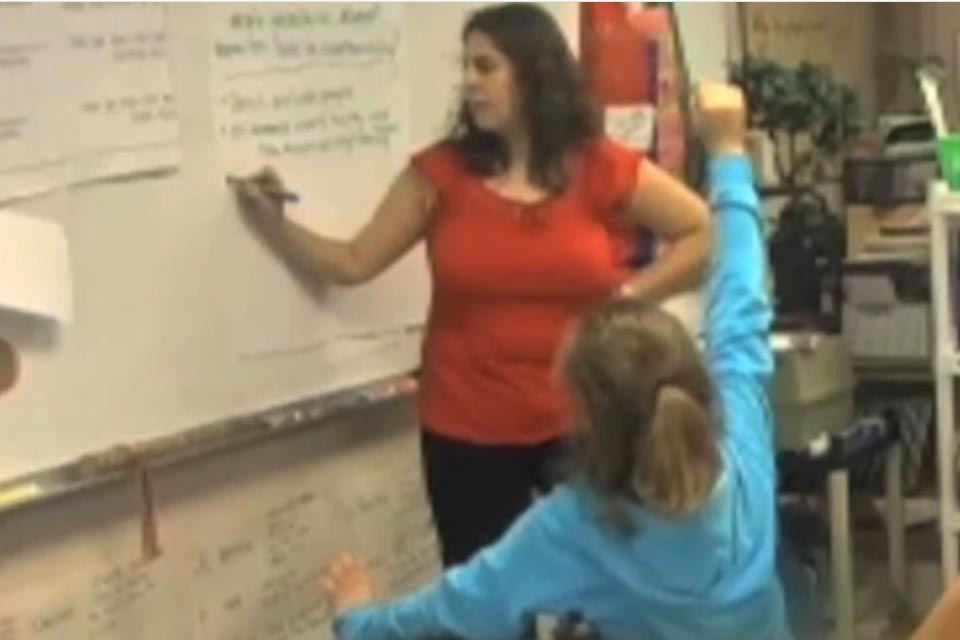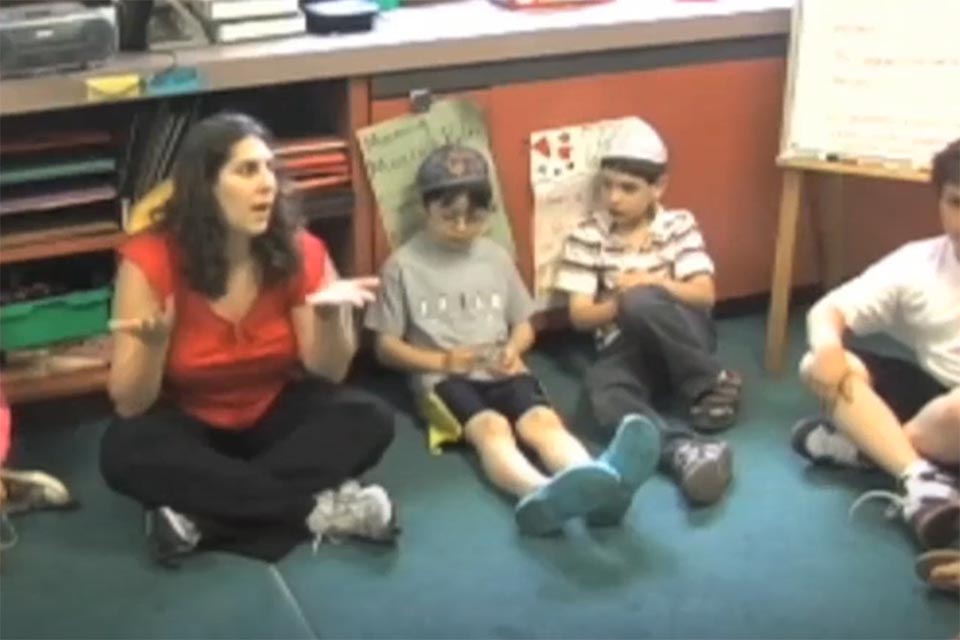A Lesson in Action
Outline: Basic Sequence of a Typical Values Lesson
This section uses video excerpts and commentary from one class session to illustrate selected elements from Outline: Basic Sequence of A Typical Values Lesson Using Havruta.
Note: The volume in these videos is of varying quality. As you watch, you may wish to follow along in the accompanying transcript.
Whole Group Mini-Lesson
Opening Question
Jocelyn opens the lesson with a question that links both her social goal and the current values text (Bereishit Rabbah 100:7) that the class is studying: “How do we make people feel included in our community?” Here is a short clip of the students discussing this idea.
Introduction to the Text
Jocelyn reveals the last part of this text. Students are excited about the newly revealed line of the text and interested in figuring out what the Hebrew means and how they might interpret it. At this late point in the year, they quickly want to jump to interpretations of the new part of the text.
Havruta Time
Once the beit midrash is set up in the classroom, the havrutot (plural) work on specific guided questions. In the video, notice the pair’s ability to:
-
actively listen to one another
-
take turns talking
-
clarify understanding of ideas
-
respectfully challenge one another’s ideas
-
ask questions, and go back to the text for support
During havruta time, students are working on multiple levels. They work to understand the text and link it to the classroom community, and also practice their havruta discussion skills. Although it is not clear whether students in this havruta fully understand the new part of the text, we see them beginning to explore its meaning. (Jocelyn will revisit the new line of text with the entire class to make sure everyone fully understands it.) This pair also puts effort into successfully using their discussion skills.
Wrap Up
Wrap-Up Text Discussion
This clip is an excerpt of the wrap-up discussion which follows havruta time. Jocelyn reframes question #4 and #5 from the guided questions for havruta and asks students: “What can this text teach us about how to live in community?” With this question, Jocelyn directly links the text to the big idea of community, and gives students an opportunity to continue to think about issues that they began to discuss in havruta. Students share what they discussed in havruta and also generate new ideas as they talk together. Jocelyn helps them elaborate their ideas, and they actively listen to one another and build off of each other’s ideas. One student in her explanation references another text that the class studied earlier in the year as part of the values curriculum, “tovim hashnaim min ha’echad” (two are better than one), to help explain the current text.
Classroom Application and Text Review Through Song
Students sit in a circle on the carpet to learn a song that incorporates the text they have been studying. Jocelyn leads the class in a discussion about how they can welcome back a member of the community who has been removed from class. Jocelyn uses a quotation from the Bereishit Rabbah text to spark a discussion about how students could use what they know from Jewish text study to help them understand why they should welcome the student back. After everyone is together, the class learns and sings the new song. Through this discussion, Jocelyn assesses how students understand belonging in the classroom community and how they view themselves in relation to each individual. This clip shows how, even after a particular student was having difficulty in class, the class was united in making sure that that person would feel comfortable and safe rejoining the group, regardless of anyone’s personal feelings about that person. Students articulate reasons for welcoming this student back into the classroom community, and many students volunteer to be the one to bring the student back into the classroom.
The song, which incorporates the words of the Bereishit Rabbah text, wraps up the lessons; it is another voice in the room offering ideas about the value of community. It gives students an opportunity to learn the text by heart and further consider its meaning. Singing this song is a way of celebrating what students learned, and reinforces a main theme of their work together—that “everyone belongs.”
